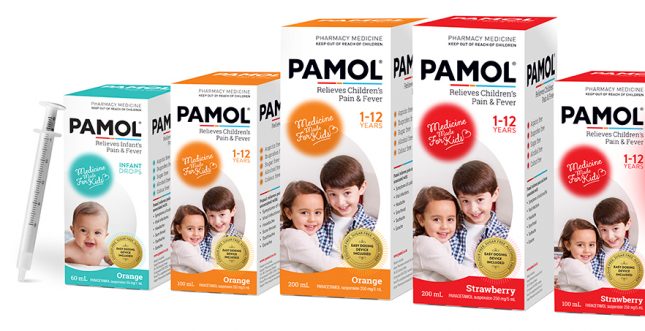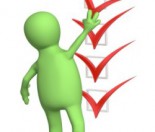Using paracetamol (Pamol and Panadol) with kids can be a difficult business. On one hand, you’ve got a poor, sick child and on the other hand, you might hear that you shouldn’t give kids paracetamol. It’s really tough for parents to know what to do. If you’re feeling a bit confused about whether to use paracetamol or not, here are some good guidelines.
Recent New Zealand guidelines recommend that fever has a purpose as it helps your child fight the infection1. The body’s natural response is to raise the core temperature to help ‘kill off’ the virus or bacteria.
So rather than automatically reaching for pain and fever medicine, the latest advice in most instances is to ‘treat the child, not the fever’2. In other words, to make your child as comfortable as possible and let the fever do its job.
If your child is miserable because of the infection, then a dose of paracetamol may help them to feel more comfortable.
1. Don’t treat fever for fever’s sake. A fever is not necessarily a bad thing. But distress and pain can be, and are worth treating. Funnily enough, this is a message that is quite counter to the old wives of the world; it seems that a fever is still considered to be a desperate life-threatening illness in itself. If your child is really miserable, a dose of paracetamol can help ease their discomfort.
However, fever can signify a serious illness. The majority of fevers in children are due to fairly minor viral illnesses but they are sometimes due to more serious illnesses (viral or bacterial) that require medical attention. In addition, if your child has an underlying medical condition or a history of convulsions we advise you consult your doctor if your child has a fever and you are concerned.
2. Stick to the dose. If are giving your children paracetamol, best to do it by weight (not all paracetamol bottles are good at this – some give quite wide ranges). If you’re confused about the dose, you can use the formula at the bottom of the page or ask your doctor or pharmacist to tell you.
The dose recommended is the optimum dose for pain relief and fever, more paracetamol than recommended will be of no greater benefit. Paracetamol is an interesting drug as it is very safe, with minimal side effects, when used in recommended doses but if higher doses than recommended are given it causes liver failure and death. The most common way to overdose a child is to give more than is recommended over several days or to allow them access to the bottle so they drink the entire contents. Needless to say, like all drugs, paracetamol should always be kept out of reach of children.
3. It’s probably best to avoid paracetamol in the hours before and after immunisation ( there is some evidence to suggest it may blunt the body’s response to the immunisation – affecting the immunity acquired).
There is some evidence about increased use of paracetamol in the first year and increased risk of childhood asthma. This research has not been conclusively proved but there are some biological reasons why this might happen, and overall, it’s just another reason not to overdo it.
There are times when treating your child with paracetamol can be the appropriate approach, however, do be cautious of giving your child too much.
Calculating paracetamol doses
If you feel confident with your maths skills, you can use these formulas to calculate the correct dose for your child:
(15 x child’s weight) / 120 x 5 (for 120mg/5ml strength Paracetamol) ..
OR
(15 x child’s weight) / 250 x 5 (for 250mg/5ml strength Paracetamol)
A good link that will calculate the correct dose is: http://www.eastmed.co.nz/paracetamol-dose-calculator.php or check out Pamol’s handy Little Helper tool that can help you work out the correct dose for your child.
New advice for parents: Treat the child, not the fever
What is a fever1,3?
A high fever is usually over 39°C.
A normal temperature is around 37°C.
A mild fever is usually between 38-39°C.
Will a fever harm my child1?
In most cases, no. A fever on its own doesn’t mean your child is seriously sick. They may feel a little miserable or uncomfortable, but a high temperature is very unlikely to cause any permanent harm.
However, there are exceptions. If your child looks unwell and you’re worried, take them to a doctor whether they have a fever or not. You should also see your doctor if the fever lasts for more than two days.
Or if your child has seen a doctor but is not improving or is getting worse, you should go back for another check (a high temperature following a virus may indicate a secondary bacterial infection such as earache or bronchitis).
What about fever in babies1?
Young babies (less than three months old) need more careful treatment, as they can’t control their body temperatures as well as an older child can.
Fever is rare in babies under six months of age and can be a sign of serious illness or infection. If your baby has a fever, seems unwell or even if you’re not sure, always see a doctor urgently.
Handy fever relieving tips
- Reduce your child’s layers of clothing to just a single layer (e.g. singlet and nappy/pants).
- Make sure the room is not too warm.
- Keep up fluids, and ensure your child rests.
- A bath or shower to cool your child down is not recommended.
- Giving paracetamol is the recommended first line medicine for treatment of pain and fever for children1.
- You may give paracetamol every four to six hours if required, but no more than four doses within 24 hours.*
- Do not routinely combine paracetamol and ibuprofen medicines unless advised to do so by your doctor4.
Always read the label and follow the pack directions on medicines and treatments for your children, and ask your pharmacist or doctor if you are unsure about any medicine.
Need further advice?
You can call Plunketline on 0800 933 922 or Healthline on 0800 611 116, toll-free, 24 hours a day.
References: 1. www.kidshealth.org.nz guidelines, endorsed by the Paediatric Society of NZ, accessed 25 Feb 2014. 2. Sullivan JE, Farrar HC. Fever and antipyretic use in children. Paediatrics. 2011; 127 (3): 580-7. 3. Ministry of Health NZ website accessed 3 February 2014, www.health.govt.nz/your-health/conditions-and-treatments/diseases-and- illnesses/fever/fever-children. 4. Non-steriodal Anti-inflammatory Drugs (NSAIDs): making safer choices. BPJ Issue 55, Oct 2013.







is Pamol can be prescribe by doctor 250mg/5mL for 3 year old?
Hi Hanna. The amount of Pamol you should use is not based on age, but on weight. A 3 year old usually weighs around 15kg. This works out to around 4.5mL for a 3 year old (for the 250mg/5mL type of Pamol), but it does depend on their weight. Your GP can prescribe Pamol for your child, and this means the cost of the Pamol will be discounted and available from a pharmacy. — Jarrod
It works out the same. Just a different way of writing the maths.
The above formula maybe wrong, it should be 15 x weight / (250/5) for 250mg/5ml strength paracetamol.